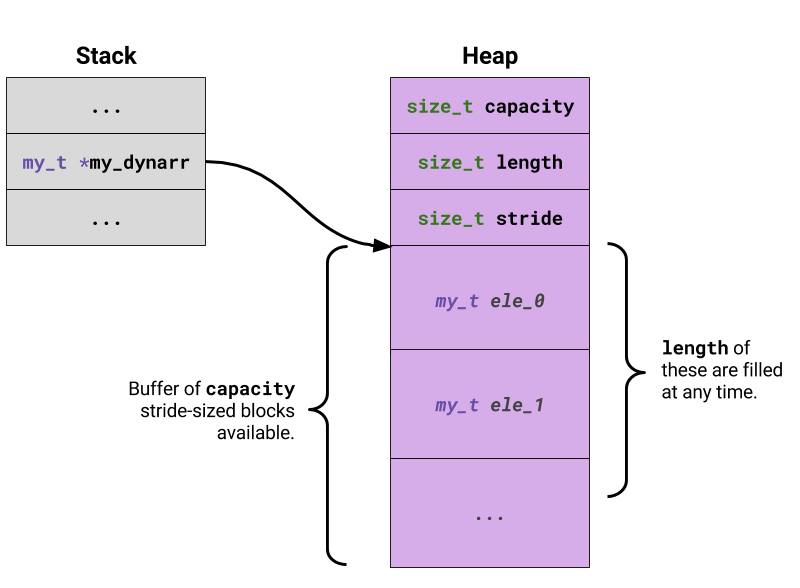A generic dynamic array implementation in C. A dynarray of type T can be passed to any function that operates on vanilla T arrays. Inspiration taken from this article by solarianprogrammer.
#include "dynarray.h"
int *v = dynarray_create(int);
for (int i = 0; i < 10; i++) {
dynarray_push(v, i);
dynarray_push_rval(v, 100 - i);
}
for (int i = 0; i < dynarray_length(v); i++) {
printf("v[%d] -> %d\n", i, v[i]);
}
dynarray_destroy(v);Output:
v[0] -> 0
v[1] -> 100
v[2] -> 1
v[3] -> 99
...
v[18] -> 9
v[19] -> 91
The array is heap-allocated and is prefixed with a three-field header containing the buffer's capacity, length, and stride.
- The
strideis calculated at creation time assizeof(T)whereTis the datatype you intend to store. - The
capacityfield stores the buffer's size. - The
lengthfield keeps track of the number of elements stored in the buffer.
Macros defined in dynarray.h allow the capacity, length, and stride attributes to be accessed.
A dynarray is referred to only by a pointer to the first element in its buffer. This allows a dynarray to be passed to any function that operates on regular C-arrays.
